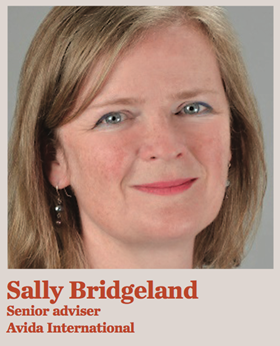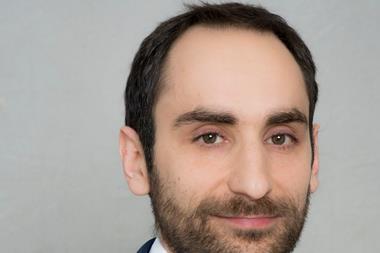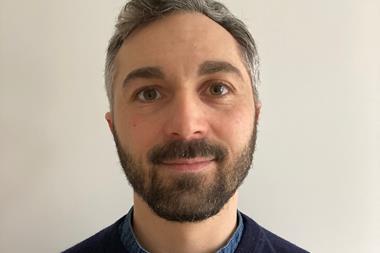“Looking beyond the UK may provide lessons on how maturing pension funds can rework investment governance”

Rembrandt’s self-portraits show an honest, unflattering, self-awareness as he aged. At a recent discussion event in London, large and maturing UK pension funds were candid in challenging their limitations and knowing their weaknesses. While UK pension funds still have long-term time horizons, these will diminish and will have a bearing on whether it is worthwhile establishing in-house resources to manage long-term illiquid investments.
As well as cost savings, the main advantage of this approach is the flexibility to design a portfolio that reflects the needs of the specific investor. However, assuming that UK pension funds are not different from other investors, ‘buying’ from a manager rather than ‘building’ in-house may turn out to be a cost-effective option for these investments.
Energy and enthusiasm is required to build operational capability in-house, particularly for illiquid assets where the cost/benefit equation differs. Although fees are saved, other costs are incurred and the governance burden increases. It is important to consider the net effect and the added value for each unit of cost.
Perhaps most strikingly, our discussion found a consensus that even the largest UK funds are sub-scale. Dutch examples suggest that the size at which you can effectively “build your own” is larger than most UK funds. The organisations taking part recognised different costs and benefits.
Looking beneath the headline figures, large UK funds struggle with complexity because they serve a number of pension funds or sponsors, each with different demands. An interesting comparison is car manufacturing given its track record of combining standardisation with tailored products. Toyota has long worked at continuous improvement (kaizen) to deal with the dilemma of efficiency versus bespoke products. In the Netherlands for example, Syntrus Achmea, has adopted this philosophy to simplify processes and outsource complexity.
Operational efficiency and technology are increasingly important for pension funds and provide a way to differentiate offerings. However, the old motto ‘any colour as long as it’s black’ may still be appropriate if sponsors have similar investment beliefs and attitudes to risk.
On a brighter note, Rembrandt was renowned for his represention of light, and our discussion shone light into dim corners where outsourcing may not be adequate or cost effective. Rather than just doing things cheaper, large UK pension funds might best focus on creating specific investment opportunities or structures not currently offered by fund managers. Taking the Pensions Infrastructure Platform (PIP) as an example, the challenge is whether pension funds need to create something new or should simply work together to get better at influencing product provision.
Given the gloomy economic environment, a key question is also whether increased in-house resources mean a fund is better placed to respond to crisis or is hampered by the inevitable limit to the skills that an in-house team can offer. As a contingency plan, a blend of buy and build might be an option.
Another question is whether illiquidity is worth the premium. Unsurprisingly, there are differing views reflecting the varying circumstances of pension funds – time horizon and cash flow for instance, or operating models and culture. Many funds have adapted their strategy and beliefs to fit operational flexibility. However, stress-testing and measuring the effectiveness of operational models – for example in terms of the opportunity cost if liquidity is needed and reduced reaction times – remains an opaque area which would benefit more attention.
Comparing the onerous Dutch regulatory environment to the relative freedom in the UK, British funds are keen to retain the ability to change and evolve, rather than risking “regulation or war” as being the only motivations for change. This is one area where UK funds are learning from mistakes rather than seeking to emulate their Dutch peers.
Our discussion showed that large UK pension funds are looking at how businesses reinvent themselves and are making greater use of business thinking in running their funds. The desire to be more commercially orientated was equated to shining a light on costs in the way that smaller business entities do. It seems sensible to be wary of complexity in an organisation if it adds cost and little else. If, and only if, you need to consider outsourcing, a different kind of resource is needed, along with a clear mandate and thorough reporting that captures the delegation. Not all providers have Rembrandt’s ability to emulate other masters so brilliantly.
Most participants noted the need to focus on competitive advantage – drawing on strengths and weaknesses and not trying to do everything. Participants flagged the need for enthusiasm and skill, but a focus on what would make a real difference. They warned about the tendency to think that one is better, different or more talented than others, and also to be conscious of how the supply and demand dynamics in the market for products and services can influence the business case, yet can change over time. Pension funds are not operating in isolation.
Homing in on a topical subject, there was discussion about whether aggregation services and collaboration are solutions to the need for scale. Again parallels were drawn with business thinking. Not all activities for any product need to be built or bought – for example, separate decisions can be made about front and back office activities. Systems might be common and shared or outsourced, even if investment decisions differ to reflect particular investment beliefs or risk requirements.
Most funds could point to approaches they had borrowed from their sponsoring organisations – including the language and approach they use when addressing issues around risk and resources. They noted with concern that many fund managers and investment consultants would find it difficult to help with some of the current challenges given their own business issues in the face of a maturing market where new skills are needed. Most had observed the importance of risk committees, rather than (return focused) investment committees, with a push for delegation of investment activities and a greater focus on risk by trustee boards.
Rembrandt was also a master of observation and interpretation. We recommend looking at how strategy is framed and how much time is spent in the boardroom, checking that this tallies with operational activity. It is vital that a board’s strategy is supported by the organisation’s capability and capacity. If gaps are present, funds should take a critical look at what needs changing: organisation or strategy?
Finally, at times of crisis, governance models and behaviour can be overstretched. Looking at how trustees and in-house teams behave in simulated crisis situations can help improve robustness and adaptability both in war and in peace.
At the end of his life, Rembrandt’s work showed how he resolved the inevitable compromises and conflicts to find contentment and inner peace. Looking beyond the UK may provide some lessons on how maturing pension funds in a maturing institutional investment market can rework their investment governance to do the same.


































No comments yet